- Joined
- Dec 28, 2007
- Messages
- 133
- Reaction score
- 82
This site visit took place early Spring 2010. At the time, there were many reports emerging from the site and I had nothing to add that hadn't already been seen and therefore couldn't see any significance in adding to the pile. However, Tuesday afternoon I heard a programme on Radio 4, 'Anatomy of a mental illness' which told the true story of Angela, who was sectioned under the Mental Health Act in 2005, and I suppose it got me thinking again about the asylums I have seen. The programme itself is well worth a listen, it's concise and to the point without added drama, and I find audio only, allowing the mind to create it's own picture, has more impact than a visual portrayal.
The seasons had just began their transition, with the bright early morning sun imposing it's presence over the dark masonary of St Johns, casting a shadow over the grounds on arrival. One could only ponder how it must have felt to someone, probably someone innocent of any crime, but irrespective of the fact, deemed by those 'who know best' to require incarceration. Being driven through the gates into darkness on the brink of the freedoms of Summer, probably for an undetermined period of time... or perhaps the patients were usually more in a similar frame of mind to Angela- temporarily neither being aware or caring where they had been taken or the magnitude of the situation.
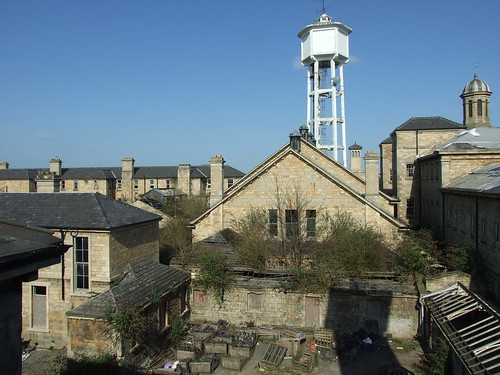
jjohns 090 by theoss, on Flickr
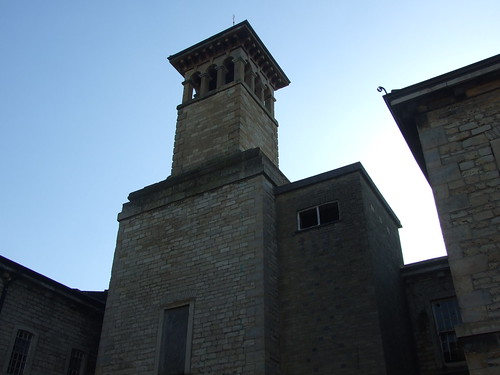
jjohns 092 by theoss, on Flickr
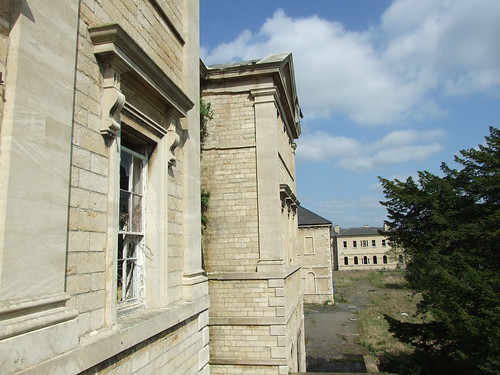
jjohns 070 by theoss, on Flickr
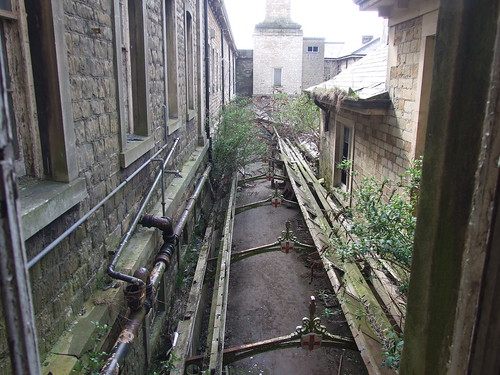
jjohns 075 by theoss, on Flickr
On approaching the Asylums I have visited, St Mary's, St John's and Cherry Knowle, I have always sensed a place of punishment. Naturally, containment, restriction of freedom at someone else's will, is easy to associate with punishment, but it almost appears the archetect was indefatigable in his quest to create imposing buildings with an air of sinister authority. Taken from Times Higher Education;
Quote-Being unable to cope was another reason you could be locked away. And being dissatisfied with your lot in life. As late as the 1960s Jean Davison was thought to need treatment because she didn't want to work in a factory. She recalled her first impression of High Royds in West Yorkshire. It was dusk, the sky was red. The hospital reared up in front of her like a Gothic castle.-
One of the corridors. I noted the honeycomb material in the ceiling and wondered if this had been selected for it's accoustic attentuation properties to subdue the sounds of patients;
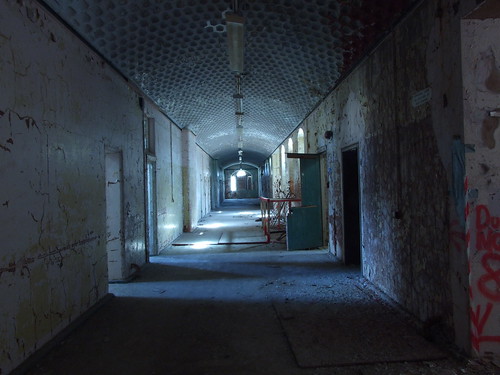
St Johs by theoss, on Flickr
St Johns really is a huge place, one of those sites where it would be useful to have a tour guide to explain the function of the various areas;
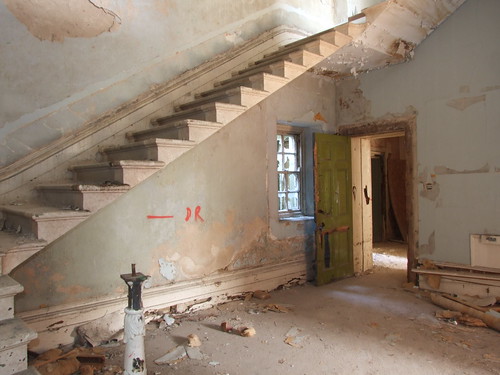
St Johs by theoss, on Flickr
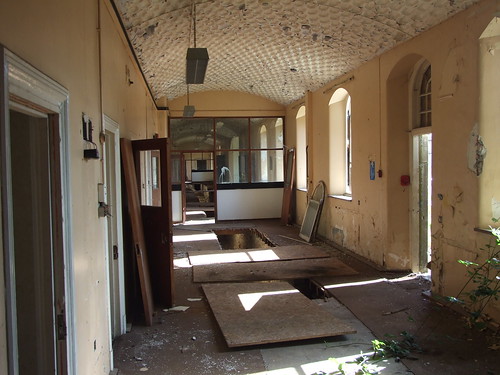
jjohns 079 by theoss, on Flickr
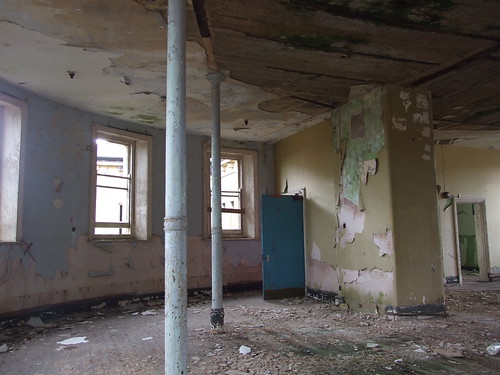
jjohns 046 by theoss, on Flickr
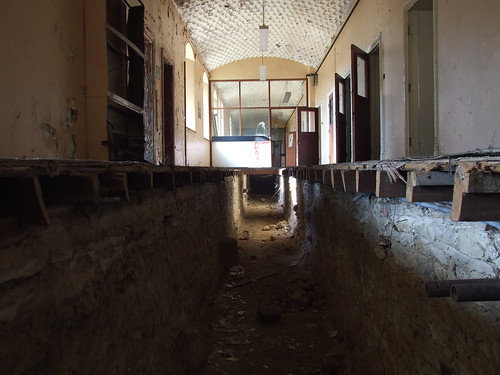
jjohns 078 by theoss, on Flickr
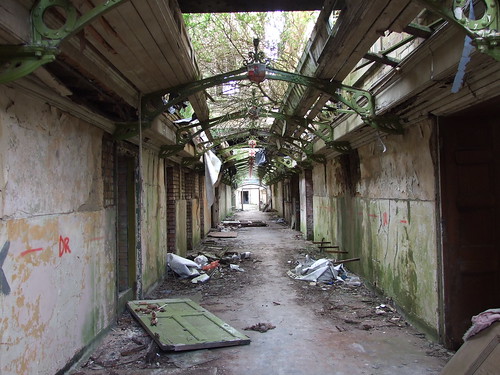
jjohns 045 by theoss, on Flickr
The ballroom stage. I wonder if attendance at functions was mandatory or optional;
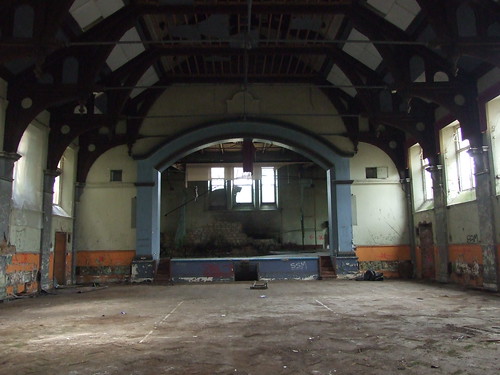
jjohns 039 by theoss, on Flickr
A broken toilet. One curious feature were the toilets in the Children's wards, these were divided in cubilcles using the frosted, wire reinforced glass, similar to that tradionally used as fire glass. The door being a particularly stout timber construction.
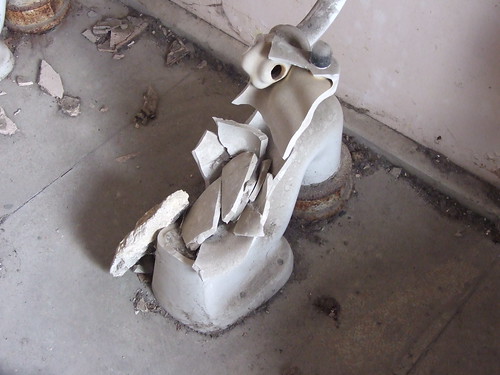
jjohns 072 by theoss, on Flickr
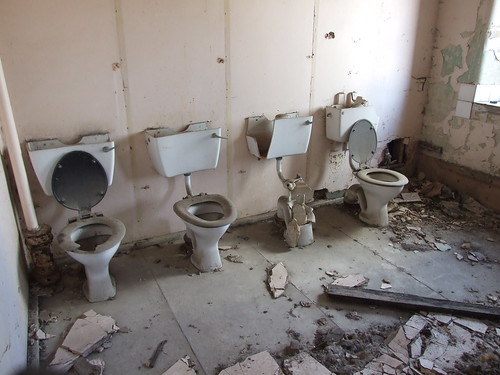
jjohns 071 by theoss, on Flickr
Some artwork in the Children's wards- ws there anything that could actually be done to cheer a place like this up?;
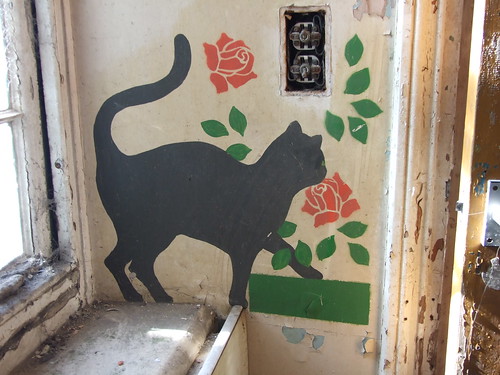
jjohns 082 by theoss, on Flickr
What appear to be secure rooms. Trying to cast my mind back, I seem to think these just had a tiny window at high level;
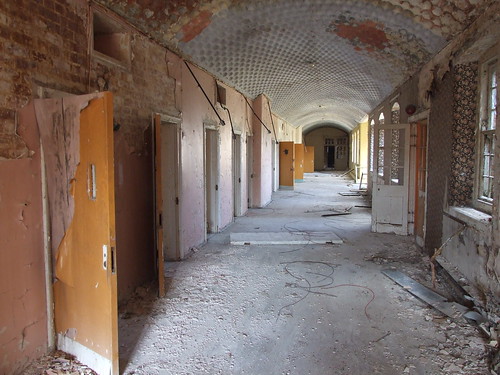
jjohns 076 by theoss, on Flickr
It is possible to spend hours wandering a place like this and loose sense of time entirely. To walk the same route several times and notice something you missed last time, even in this stripped out state of decay. The questions raised by the environment,and there were plenty, were along the lines of- did people move forward from here? did the environment create an averaging effect, with people admitted with mild problems actually becoming worse, was the aim merely to contain or to prepare people for independant life...?
From the lows of the basement;
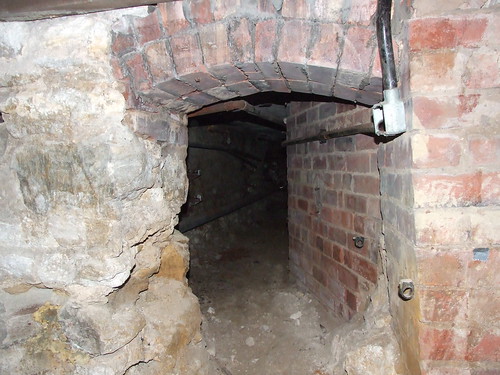
jjohns 059 by theoss, on Flickr
To looking into the light through one of the towers;
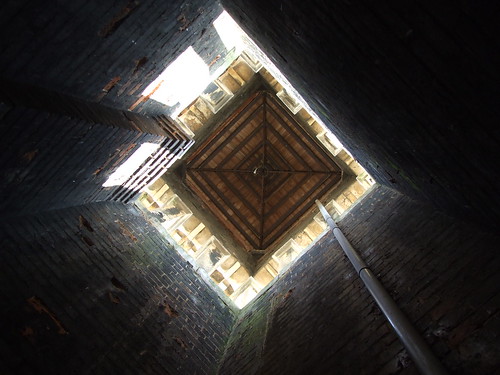
jjohns 084 by theoss, on Flickr
Articles;
'Anatomy of Mental Illness' Radio 4 http://www.bbc.co.uk/programmes/b00rxj4x
Times Higher Education: http://www.timeshighereducation.co.uk/story.asp?storycode=411789
The seasons had just began their transition, with the bright early morning sun imposing it's presence over the dark masonary of St Johns, casting a shadow over the grounds on arrival. One could only ponder how it must have felt to someone, probably someone innocent of any crime, but irrespective of the fact, deemed by those 'who know best' to require incarceration. Being driven through the gates into darkness on the brink of the freedoms of Summer, probably for an undetermined period of time... or perhaps the patients were usually more in a similar frame of mind to Angela- temporarily neither being aware or caring where they had been taken or the magnitude of the situation.

jjohns 090 by theoss, on Flickr

jjohns 092 by theoss, on Flickr

jjohns 070 by theoss, on Flickr

jjohns 075 by theoss, on Flickr
On approaching the Asylums I have visited, St Mary's, St John's and Cherry Knowle, I have always sensed a place of punishment. Naturally, containment, restriction of freedom at someone else's will, is easy to associate with punishment, but it almost appears the archetect was indefatigable in his quest to create imposing buildings with an air of sinister authority. Taken from Times Higher Education;
Quote-Being unable to cope was another reason you could be locked away. And being dissatisfied with your lot in life. As late as the 1960s Jean Davison was thought to need treatment because she didn't want to work in a factory. She recalled her first impression of High Royds in West Yorkshire. It was dusk, the sky was red. The hospital reared up in front of her like a Gothic castle.-
One of the corridors. I noted the honeycomb material in the ceiling and wondered if this had been selected for it's accoustic attentuation properties to subdue the sounds of patients;

St Johs by theoss, on Flickr
St Johns really is a huge place, one of those sites where it would be useful to have a tour guide to explain the function of the various areas;

St Johs by theoss, on Flickr

jjohns 079 by theoss, on Flickr

jjohns 046 by theoss, on Flickr

jjohns 078 by theoss, on Flickr

jjohns 045 by theoss, on Flickr
The ballroom stage. I wonder if attendance at functions was mandatory or optional;

jjohns 039 by theoss, on Flickr
A broken toilet. One curious feature were the toilets in the Children's wards, these were divided in cubilcles using the frosted, wire reinforced glass, similar to that tradionally used as fire glass. The door being a particularly stout timber construction.

jjohns 072 by theoss, on Flickr

jjohns 071 by theoss, on Flickr
Some artwork in the Children's wards- ws there anything that could actually be done to cheer a place like this up?;

jjohns 082 by theoss, on Flickr
What appear to be secure rooms. Trying to cast my mind back, I seem to think these just had a tiny window at high level;

jjohns 076 by theoss, on Flickr
It is possible to spend hours wandering a place like this and loose sense of time entirely. To walk the same route several times and notice something you missed last time, even in this stripped out state of decay. The questions raised by the environment,and there were plenty, were along the lines of- did people move forward from here? did the environment create an averaging effect, with people admitted with mild problems actually becoming worse, was the aim merely to contain or to prepare people for independant life...?
From the lows of the basement;

jjohns 059 by theoss, on Flickr
To looking into the light through one of the towers;

jjohns 084 by theoss, on Flickr
Articles;
'Anatomy of Mental Illness' Radio 4 http://www.bbc.co.uk/programmes/b00rxj4x
Times Higher Education: http://www.timeshighereducation.co.uk/story.asp?storycode=411789




 Simply the best written report I've ever read. Thank you so much for sharing.
Simply the best written report I've ever read. Thank you so much for sharing. 



























